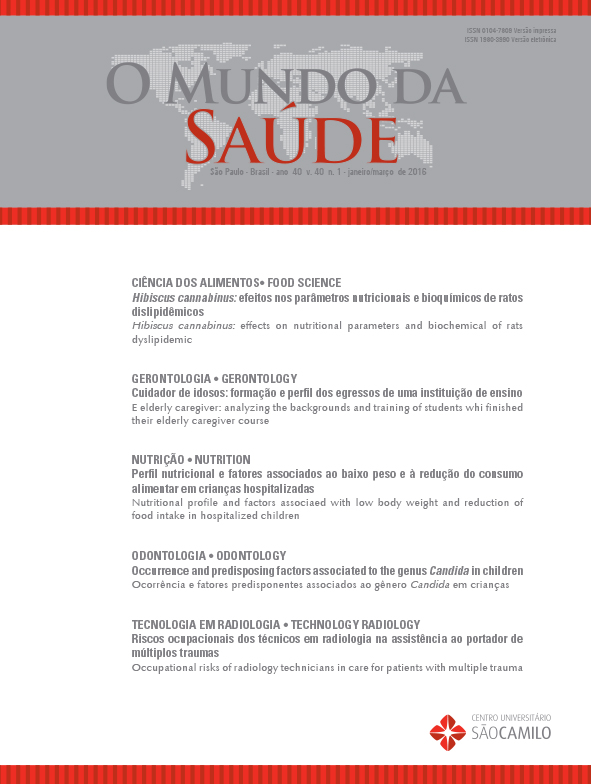Patterns of food consumption in a city Recôncavo of Bahia: a focus on food and nutrition security
DOI:
https://doi.org/10.15343/0104-7809.201640015160Keywords:
Feeding Behaviour, Food and Nutritional Security, Factorial AnalysisAbstract
The objective of this study was to identify the patterns of food consumption of residents from a city of the Bahia’s
Reconcavo, analyzing this issue in the context of food and nutrition security. This is a cross-sectional study, developed in
the city of Santo Amaro, Bahia. Fifty adults, users of the Unit of Family Health, participated in this study. It was employed
the Questionnaire of Food Frequency, which is composed of 93 food items. Factorial analysis for principal components
in order to identify the consumption patterns of the aforesaid population. The population of this study was composed
mostly by women (40,80%). It was identified four patterns of food consumption, labeled as it follows: a mixed pattern
integrated by fruits, vegetables, dairy, preparation and beverages, a traditional pattern characterized by oilseeds, fish,
grains, farinaceous and cereal, a regional pattern composed by regional preparations, bakery products, dough, and
eggs, and an western pattern with predominance of sugars/sugary and meats. The present study identified two food
consumption patterns considered healthy and two others considered unhealthy. The latter patterns represent a risk to
food and nutritional security of this population, by having low quantity of nutrients and high quantity of sodium and fat.






























